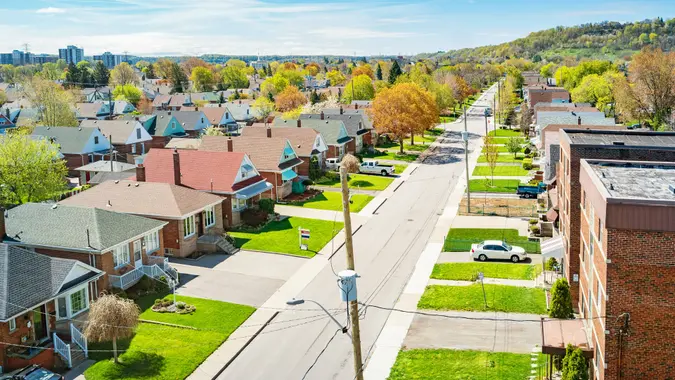6 Unavoidable Expenses Keeping the Lower Class Poor

Commitment to Our Readers
GOBankingRates' editorial team is committed to bringing you unbiased reviews and information. We use data-driven methodologies to evaluate financial products and services - our reviews and ratings are not influenced by advertisers. You can read more about our editorial guidelines and our products and services review methodology.

20 Years
Helping You Live Richer

Reviewed
by Experts

Trusted by
Millions of Readers
The gap between the wealthy and the poor continues to widen. This disparity is not solely the result of income differences but also the impact of unavoidable expenses that disproportionately affect the lower class.
These expenses create a cycle of poverty that’s hard to escape. Here are six significant expenses that are particularly burdensome for those with limited financial resources.
Housing Costs
Housing represents one of the largest household expenses, but the burden is especially heavy for those in the lower economic brackets. Affordable housing is increasingly scarce, and many families find themselves allocating a substantial portion of their income toward rent or mortgage payments.
This leaves little room for savings or investing in assets that could appreciate over time, such as property or education. Furthermore, securing affordable housing often means living in areas with higher crime rates or insufficient educational opportunities.
Healthcare Expenses
Access to affordable healthcare is another major challenge for the lower class. In countries without universal healthcare, medical expenses can quickly become overwhelming, leading to significant debt or the avoidance of necessary care. This lack of access affects physical health and financial stability, as unexpected medical bills can derail budgets and savings plans.
Education Costs
Education has long been touted as a pathway out of poverty, but the rising cost of education makes it a double-edged sword. From early childhood education to university tuition, the costs are daunting.
For families in the lower economic tier, these expenses can be prohibitive, limiting access to higher-paying jobs that require advanced degrees. Moreover, the burden of student loans can stifle economic mobility for years.
Transportation
Reliable transportation is essential for accessing employment, education, and healthcare. However, the costs associated with owning and maintaining a vehicle can be prohibitive for those in the lower class.
Public transportation, where available, can offer some relief, but it may not be a viable option for everyone, especially in rural or underserved areas. The lack of affordable transportation options can limit job opportunities.
Groceries
The issue of food insecurity significantly impacts the lower class. Healthy, nutritious food often comes at a premium, and for families struggling to make ends meet, cheaper, less nutritious options become the norm.
This not only affects physical health but also cognitive development in children, impacting their educational outcomes and future earning potential. The choice between paying for food or other essential expenses like housing or healthcare can lead to a cycle of food insecurity and poor health.
Utility and Energy Costs
Electricity, heating, and water expenses cannot be easily reduced or eliminated. Lower-income families tend to live in older, less energy-efficient housing, leading to higher utility bills. Furthermore, in many areas, the cost of utilities is rising faster than inflation and wages, further squeezing budgets that are already tight.
Energy poverty, where a significant portion of income goes toward utility bills, forces families to decide between heating their homes, buying food, or paying for healthcare. This affects their comfort and health and limits their ability to allocate money toward savings or investments.
Editor's note: This article was produced via automated technology and then fine-tuned and verified for accuracy by a member of GOBankingRates' editorial team.
 Written by
Written by 

























